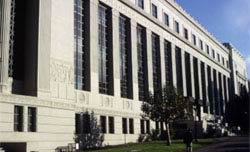However, we do have a limited number of fossil exhibits on display outside of the collection. These can be viewed, free of charge, any time the Valley Life Sciences Building is open.
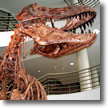 |
A freestanding mount of Tyrannosaurus
rex is at the centerpiece of the atrium. |
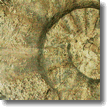 |
A cast of Pachydiscus
seppenradensis, a Cretaceous ammonite almost eight feet
across is located south of the T-rex. |
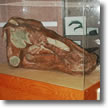 |
A skull of Edmontosaurus annectans is just outside the Museum’s front door. | 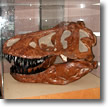 |
A skull of another T. rex sits at the foot of the main staircase. |
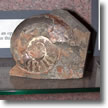 |
Six small display cases exhibit fossils and dinosaur material from the Cretaceous of California. | 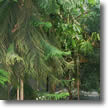 |
Living relatives of Cretaceous plants are in the planters on either side of the entrance to the University and Jepson Herbaria. |
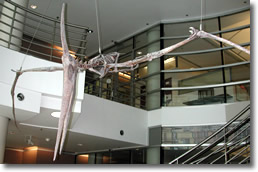 |
Suspended above the T. rex, and with a wingspan close to 22 feet, this Pteranodon ingens soars above the T. rex in the circular stairwell. |
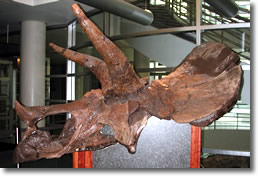 |
An adult Triceratops horridus skull is found just inside the BioSciences Library.... |
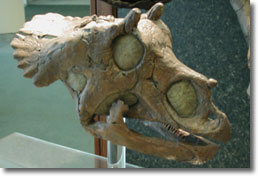 |
...along with a cast of the smallest Triceratops skull ever found. |
| A large case at the end of the central corridor houses the following: | |||
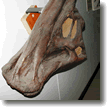 |
A skull of Parasaurolophus walkeri, a crested hadrosaur from the Judith River Formation of Saskatchewan, Canada | 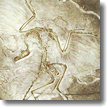 |
Archaeopteryx lithographica, the earliest known feathered bird, from the late Jurassic of Germany |
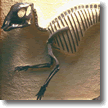 |
A juvenile Maiasaura peeblesorum, a hadrosaur from the Cretaceous Two Medicine Formation of Montana | 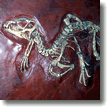 |
Heterodontosaurus tucki, an early ornithiscian dinosaur from the Triassic of South Africa |
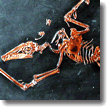 |
Campylognathoides liasicus, an early Jurassic pterosaur from Germany. | ||
The Valley Life Sciences Builiding (VLSB)
|
We often hear this question. By this, people usually mean, "Where are the physical exhibits displayed?" By definition, museums are devoted to the collection and preservation of objects which might otherwise be lost to future generations. Public exhibits are very important for most museums, but are rarely the primary purpose. As the state repository for California fossils, UCMP's research collection is extensive and is of tremendous importance for researchers. |
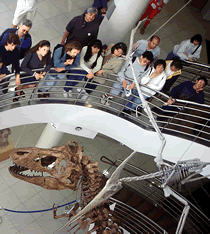 |
Docent tours may be arranged for youth and school groups.
